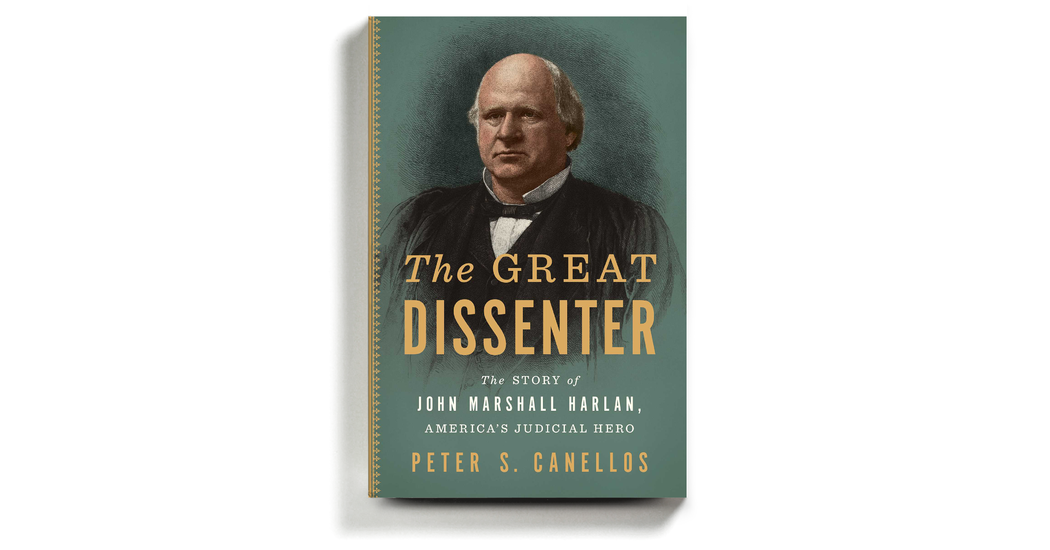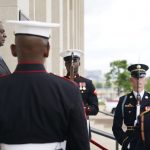
On March 19, 1906, in a horrific act of terror that had become all too common in the South, a white mob descended on a Chattanooga jail and dragged a young Black man from his cell. The man, Ed Johnson, had already been sentenced to death for sexually assaulting a white woman — despite the fact that she couldn’t definitively identify Johnson, and wasn’t even sure if her assailant was Black.
The mob strung Johnson up to the city’s landmark bridge and left his body to hang over the Tennessee River. But murdering him apparently wasn’t enough. The crowd started chanting the name of John Marshall Harlan, the Supreme Court justice who had issued a stay of execution while the highest court reviewed the details of Johnson’s case. A note pinned to Johnson’s body bore a taunt that exuded an entitled impunity: “To Chief Harlan. Here is your Negro. Thanks for your kind consideration of him. You can find him at the morgue.”
Anybody who had encountered Harlan several decades before would have had a hard time believing he had become the target of white supremacists. Born in 1833 to a prominent slaveholding family in Kentucky, Harlan freed the people he himself held in bondage only after the ratification of the Thirteenth Amendment, which he had opposed. When he was appointed to the Supreme Court in 1877, it was considered a sop to the South. Republicans, who belonged to what was the antislavery party at the time, generally mistrusted him, with one of them calling him “the sycophantic friend and supplicant tool” of anti-Reconstruction forces.
But Harlan turned out to be a stalwart proponent of civil rights. He was often the lone dissenting voice on a Supreme Court whose decisions — which included the notorious “separate but equal” ruling in Plessy v. Ferguson — essentially abandoned Black Southerners to Jim Crow. Frederick Douglass praised Harlan as a “moral hero,” and Thurgood Marshall would later cite him as an inspiration. In a new biography of Harlan, “The Great Dissenter,” Peter S. Canellos — an editor at Politico and the author of a biography of Ted Kennedy — says that Americans don’t yet fully appreciate this personal and political transformation, if they even recognize Harlan’s name at all.
Despite what Canellos describes as Harlan’s startling “prescience” — crafting dissents that refuted the widespread prejudices of his own time and resonated with later generations — Harlan doesn’t occupy much of a place in the public imagination. The literature of his life has consisted mainly of academic biographies. This new book is a worthy addition: Solidly accessible and thoroughly researched, it makes a persuasive case for Harlan’s significance and sometimes reads like a mystery. We live at a moment when it can be difficult for people to escape the words and deeds of their previous selves. What to make of a man who, in the approving words of one supporter of his appointment to the Supreme Court, had “sloughed off his old pro-slavery skin”?
Given his unlikely political trajectory, Harlan faced a predictable charge of opportunism — that he had merely sensed which way the political winds were blowing after the Civil War and calibrated his pragmatic self accordingly. But Canellos discerns an unbroken thread running through Harlan’s life. The judge harbored a lifelong abhorrence of national divisions — it’s just that his understanding of who was responsible for the most fractious of those divisions would change according to his experiences. His conversion to the civil rights cause was hard-won.
The Supreme Court: Upcoming Cases
-
- A Big Month. June is peak season for Supreme Court decisions. It is the final month of the court’s annual term, and the justices tend to save their biggest decisions for the term’s end.
- 4 Big Cases. The court is set to rule on the fate of Obamacare, as well as a case that could determine scores of laws addressing election rules in the coming years. It is also taking on a case involving religion and gay rights and one on whether students may be disciplined for what they say on social media (here’s an audio report on that subject; and here’s where public opinion stands on several of the big cases).
- What to Watch For. The approaches that Amy Coney Barrett, the newest justice, and Brett Kavanaugh, the second-newest, take. They will be crucial because the three liberal justices now need at least two of the six conservatives to form a majority. Before the death of Ruth Bader Ginsburg, the liberals needed only one conservative.
- Looking Ahead. Next year’s term, which will start in the fall, will have cases on abortion, guns and perhaps affirmative action, and could end up being the most significant term so far under Chief Justice John Roberts.
Like his father, Harlan was so averse to conflict that he criticized both the abolitionists and the cruelest of enslavers, while insisting that the question of slavery should be left up to the states. But in the lead up to the Civil War, he started to recognize how compromise, in practice, often meant capitulation to the voracious ambitions of the Slave Power. Kentucky, a border state, had declared neutrality before the Confederacy invaded. Harlan announced his decision to fight for the Union by appealing to “the cause of human liberty” — a reference that, Canellos concedes, “may have jarred those who just two years earlier had heard John talk of protecting the rights of slave owners.”
Canellos keeps on first-name terms with “John” throughout, and a good deal of “The Great Dissenter” is also devoted to the life story of “Robert” — Robert Harlan, rumored to be the son of John’s father and an enslaved woman, even though John and Robert consistently “maintained a polite silence on the subject.”
John and Robert had a relationship that, from all indications, was filled with mutual respect; Robert, given the kind of prerogatives denied other enslaved people in the Harlan household, made a fortune in horse racing and the gold rush. (There’s a glut of horse-racing detail in this book, not all of it essential.) Canellos argues that seeing Robert’s extraordinary accomplishments up close was bound to have an effect on John and his jurisprudence.
The arc of Canellos’s narrative is comforting, bending toward justice, with the long Jim Crow era eventually yielding to Brown v. Board and the 1964 Civil Rights Act. He mentions but doesn’t dwell on the legacy of Harlan’s grandson John Marshall Harlan II, who served as a “great dissenter” himself, but as a conservative justice on the Warren Supreme Court.
Canellos is protective of his biographical subject, straining to put a charitable gloss on some of Harlan’s more troubling comments from the bench, especially regarding what Harlan called “the Chinese race.” You also sense that Canellos wants to believe that the highest court still reflects “the logical progression of a man whose top priority had always been the preservation of American ideals,” even if some observers of the direction taken by the current Court have argued otherwise.
At one point in his research, Canellos tracked down a descendant of Robert Harlan, Robert Jackson Harlan Jr., who came of age as a Black man under segregation. “You know, I always liked the stories with happy endings,” he told Canellos, before adding: “On the other hand, it ends the way it’s gonna end whether you like it or not.”







